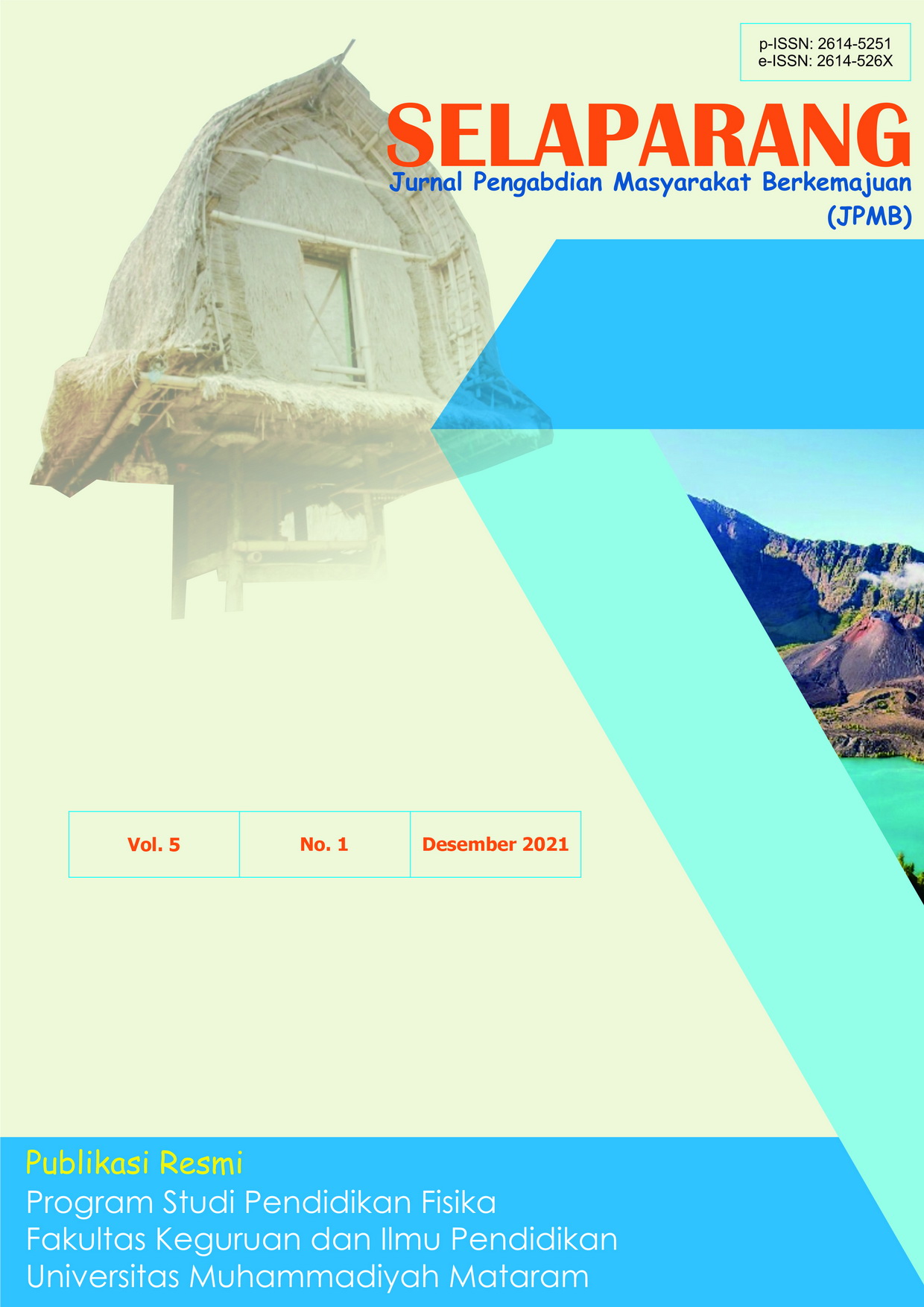PELATIHAN PEMBUATAN BIOCHAR DARI SERESAH GAMBUT UNTUK MEMINIMALISIR KEBAKARAN LAHAN DI DESA RASAU JAYA II
DOI:
https://doi.org/10.31764/jpmb.v5i1.6396Keywords:
charcoal, histosol, peat.Abstract
ABSTRAK
Lahan gambut di Desa Rasau Jaya II relatif luas yang berpotensi untuk dimanfaatkan sebagai lahan pertanian walaupun kondisinya marginal. Petani umumnya membakar lahan tersebut pada musim kemarau untuk meningkatkan kesuburan namun efek negatifnya adalah munculnya titik api dan polusi udara dari asap hasil kebakaran lahan. Oleh karena itu dibutuhkan suatu teknologi agar lahan tersebut dapat dimanfaatkan untuk pertanian dengan risiko yang minimal terhadap lingkungan, seperti pembuatan biochar dengan teknik pembakaran terkontrol dari serasah gambut. Tujuan: (1) Meningkatkan pengetahuan petani mengenai pengelolaan lahan tanpa dibakar dan cara pembuatan biochar, (2) Meningkatkan keterampilan petani dalam pembuatan biochar, (3) Meningkatkan jiwa wirausaha terutama produk biochar. Kegiatan ini menggunakan metode observasi, partisipator dan eksperimental serta survey dengan kegiatan penyuluhan, pelatihan, pembuatan dan aplikasi biochar yang dibuat dari serasah gambut serta evaluasi di Desa Rasau Jaya II. Hasil dari kegiatan tersebut yaitu 97% peserta mengetahui dampak positif pengelolaan lahan tanpa dibakar dan mengetahui cara pembuatan biochar, 93% petani sudah terampil dalam membuat biochar, serta 93% petani juga tertarik untuk mengaplikasikan biochar dalam budidaya tanaman dan menjadikan produk usaha. Kegiatan ini telah meningkatkan pengetahuan, keterampilan dan jiwa wirausaha dalam pertanian khususnya pembuatan biochar dan cukup potensial untuk meningkatkan perekonomian petani cabai di Desa Rasau Jaya serta mengurangi pembakaran hutan dan lahan.
Â
Kata kunci: arang; charcoal; histosol; peat.
Â
ABSTRACT
The peat land in Rasau Jaya II Village are relatively wide which could be used for agriculture potentially even though its in marginal condition. Generally, the farmers would burned the land in the dry season to increase fertility, but the negative effects are emergence of hotspots and air pollution from smoke. Therefore, a technology is needed so that the land can be used for agriculture with minimal risk to the environment, such as making biochar with controlled burning techniques from peat litter or twigs. Objectives: (1) Increase farmers' knowledge about eco-friendly peat land management and how biochar are made, (2) Improve farmers' skills in making biochar, (3) Increase entrepreneurial spirit, especially biochar. This community service activity used observation, participatory and experimental methods as well as surveys with extension activities, training, manufacture and application of biochar made from peat litter as well as evaluation in Rasau Jaya II Village. The results of this activity are that 97% of participants know about positive impact in peat land management without burning activity wich is relatively new for them , 93% of farmers are skilled in making biochar, and 93% of farmers are also interested in applying biochar in plant cultivation and making business products. This activity has increased knowledge, skills and entrepreneurial spirit in agriculture, especially in producing biochar and has the potential to improve the economy of chili farmers in Rasau Jaya Village and reduce forest and land burning activity.
Key words: charcoal; charcoal; histosol; peat.
References
Adetiya, N., Sumihar H., Suswati. (2017). Pertumbuhan dan Produksi Tanaman Cabai Merah (Capsicum annum L.) Bermikoriza dengan Aplikasi Biochar dan Pupuk Kimia. Jurnal Agroteknologi dan Ilmu Pertanian. Vol 1(2) : 126-143
[BPS] Badan Pusat Statistik. (2019). Kecamatan Rasau jaya dalam Angka 2019. diakses pada 4 Mei 2020 pada laman http://kuburayakab.bps.go.id.
Gani, Anischan. (2009). Potensi Arang Hayati “Biochar†sebagai Komponen Teknologi Perbaikan Produktivitas Lahan Pertanian. Jurnal Iptek Tanaman Pangan. Vol 4 (1) : 33-48
Adimihardja, Abdurachman. (2008). Teknologi Dan Strategi Konservasi Tanah Dalam Kerangka Revitalisasi Pertanian. Bogor. Jurnal Pengembangan Inovasi Pertanian. Vol 1 (2) : 105-124
Lehmann, J., J. Gaunt, and M. Rondon. (2006). Biochar sequestration in terrestrial ecosystems-a review. Mitigation and Adaptation Strategies for Global Change 11:403-427.
Miles, T. (2009). Use of biochar (charcoal) to replenish soil carbon pools, restore soil fertility and sequester CO2. United Nations Convention to Combat Desertification 4th Session of the Ad Hoc Working Group on Long-term Cooperative Action under the Convention, Poznan 1-10 December 2008.
Nurida, N.L., Achmad R, dan S. Sutono. (2015). Biochar Pembenah Tanah yang Potensil. IAARD Press : Jakarta
Sohi, S., Elisa L., Evelyn K., Roland B. (2009). Biochar, climate change and soil : A review to guide future research. CSIRO Land and Water Science Report : 1834-6618
Zaror, C.A., & D.L Pyle. (1982). The pyrolysis of biomass : A general review. Proceedings of the Indian Academy of Sciences Section C : Engineering Sciences. 269
Downloads
Published
Issue
Section
License
The copyright of the received article shall be assigned to the journal as the publisher of the journal. The intended copyright includes the right to publish the article in various forms (including reprints). The journal maintains the publishing rights to the published articles.

Selaparang : Jurnal Pengabdian Masyarakat Berkemajuan is licensed under a Creative Commons Attribution-ShareAlike 4.0 International License.

